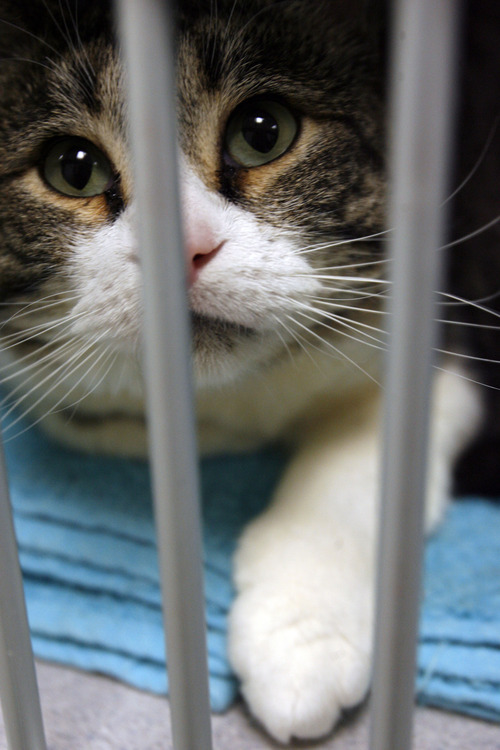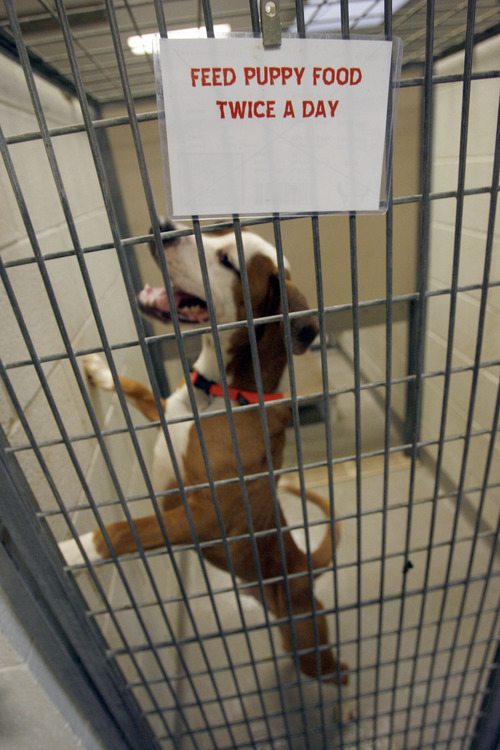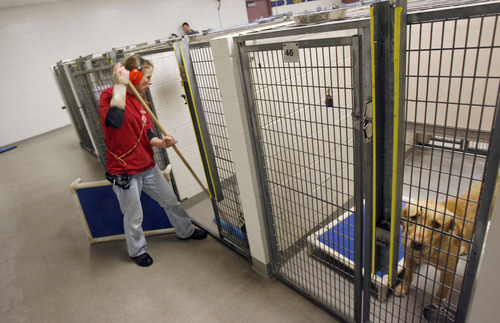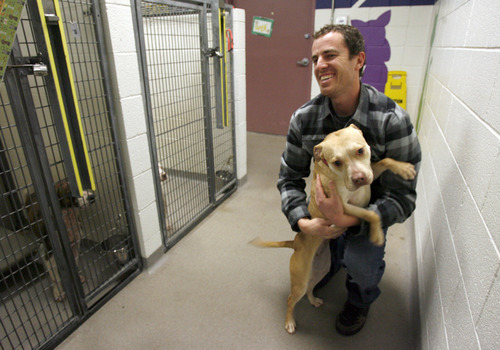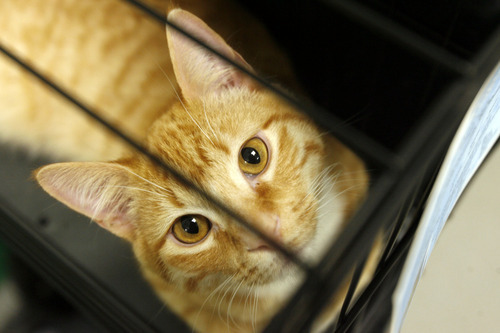This is an archived article that was published on sltrib.com in 2012, and information in the article may be outdated. It is provided only for personal research purposes and may not be reprinted.
Five years ago, staff members at Salt Lake County Animal Services felt demoralized by the practice of euthanizing healthy animals because space was tight.
So with the help of animal advocacy groups, they threw their efforts into getting pets into good homes. Shelter hours were extended into the early evening, special pricing was offered during three-day adoption "frenzy" events, dogs and cats who had been at the facility a long time were turned over to rescue groups to be fostered, and spaying and neutering costs were lowered.
And in 2011, the shelter marked its first official year as a no-kill facility.
"People don't want to get behind anything that involves killing animals, but they will get behind lifesaving programs," April Harris, Salt Lake County Animal Services associate director, said of the community support that helped the agency reach its goal.
This is the approach some animal advocates want the West Valley-Taylorsville Animal Shelter to take. They've been lobbying the city councils of the two west-side suburbs to drop the carbon monoxide chamber, which is used in 51 percent of the euthanasia cases there, and to increase adoption efforts.
The advocates claim that euthanizing by gas is inhumane and that the chamber has been malfunctioning. Their prime example is Andrea, a cat who survived two attempts by shelter workers to gas her to death last fall.
—
Chamber conflict • Janita Coombs, a volunteer with Community Animal Welfare Society who has been taking care of Andrea, alleges notes made by shelter workers show gassing didn't work on the first attempt nine times between February 2010 and October 2011. She obtained the notes through a Government Records Access and Management Act request.
Shelter officials dispute that the gas chamber is inhumane and say the method can be the better option in certain circumstances, including when animals are vicious and could attack. They also deny that the chamber has malfunctioned.
In a Jan. 12 memo, Layne Morris, Community Preservation Department director, said the incidents cited by Coombs were the result of human error, including several times when workers did not completely shut the door so no gas was released. He said more training has resolved the issue.
The carbon monoxide chamber is "a valuable asset," Morris said in the memo. "Our employees regularly express appreciation for it and its ability to humanely assist them in the very difficult task of ending a life."
—
Defining no-kill • No-kill actually means low-kill because all shelters put down animals that are dangerous, gravely injured or too sick to recover. To be considered no-kill, a shelter must euthanize fewer than five animals for every 1,000 customers it serves, Harris said.
The Salt Lake County shelter serves unincorporated county areas, Salt Lake City, Herriman, Holladay and Midvale. Last year, it euthanized 4.4 animals for every 1,000 people, for a total of 2,110 cats, dogs, birds, livestock and other animals.
No animal is euthanized for space or time reasons and all are put down by injection, Harris said. Vicious animals can be tranquilized first, sometimes with a syringe attached to a 6-foot-long pole, for the protection of the shelter worker, she said.
Harris also said operating a no-kill shelter is no more expensive than running one that euthanizes animals based on space or the length of their stay. Food costs are higher but euthanasia costs are lower, she said.
About 85 rescue groups and volunteers help keep expenses down, putting in 75,577 hours of work in 2011, Harris said. And the shelter's operating hours — 10:30 a.m. to 6:30 p.m. Monday through Friday and 9 a.m. to 5 p.m. Saturday — boosts adoptions and moves pets out faster, she said.
—
Weighing costs • At a Taylorsville City Council meeting on Jan. 18, several attendees said the suburb should drop its contract with the West Valley City shelter and receive its animal services through Salt Lake County instead. Taylorsville is paying $252,000 a year for animal control services.
A change would come at a cost. When the west-side shelter was built in 2009, Taylorsville agreed to pay one-third of the bond for it, or $1,450,440 plus interest. (The building, at 4522 W. 3500 South, cost $7.9 million and includes other West Valley City offices; the shelter portion cost about $4.4 million of the total).
If Taylorsville terminates its agreement before the end of 2013, it would have to give West Valley City the equivalent of two years of bond payments, or about $274,000.From 2014 through 2018, termination would cost one year's payment.
pmanson@sltrib.comTwitter: @PamelaMansonSLC f —
By the numbers
Salt Lake County Animal Services:
Animals accepted
2006 • 11,950
2007 • 11,285
2008 • 10,458
2009 • 10,617
2010 • 10,457
2011 • 10,293
Euthanasia cases
2006 • 4,987
2007 • 4,461
2008 • 4,032
2009 • 3,502
2010 • 2,289
2011 • 2,110
Adoptions arranged
2006 • 1,872
2007 • 1,785
2008 • 1,770
2009 • 2,083
2010 • 2,929
2011 • 2,710


